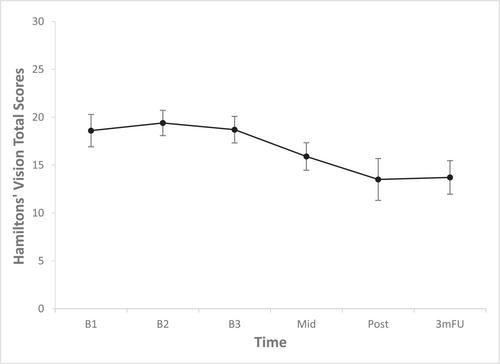Imagery-Focused Therapy for Visual Hallucinations: A Case Series
Abstract
Introduction
Visual hallucinations (VH) are more common than previously thought and are linked to higher levels of distress and disability in people with a psychotic illness. Despite this, scant attention has been given to VHs in the clinical literature, and the few therapy case series of cognitive behavioural therapy (CBT) published to date have not demonstrated reliable change. In other areas of clinical research, problematic mental imagery has been found to be more strongly related to negative affect in psychological disorders than negative linguistic thinking, and imagery focused techniques have commonly been found to improve the outcomes in CBT trials. Given VHs have many similarities with visual mental imagery and many of the distressing beliefs associated with VHs targeted in CBT are maintained by accompanying mental imagery (i.e., imaging a hallucinated figure attacking them), it seems plausible that an imagery-focused approach to treating VHs may be most effective.
Methods
The current study is a multiple baseline case series (N = 11) of a 10-session imagery-focused therapy for VH in a transdiagnostic sample.
Results
The study had good attendance and feedback, no adverse events and only one [seemly unrelated] drop-out, suggesting good feasibility, safety and acceptability. The majority of clients reported reduction on both full-scale measures (administered at 3 baselines, midtherapy, posttherapy and 3-month follow-up) and weekly measures of VH severity and distress, ranging from medium to large effect sizes.
Conclusions
The case series suggests that an imagery-focused approach to treating VHs may be beneficial, with a recommendation for more rigorous clinical trials to follow.


 求助内容:
求助内容: 应助结果提醒方式:
应助结果提醒方式:


